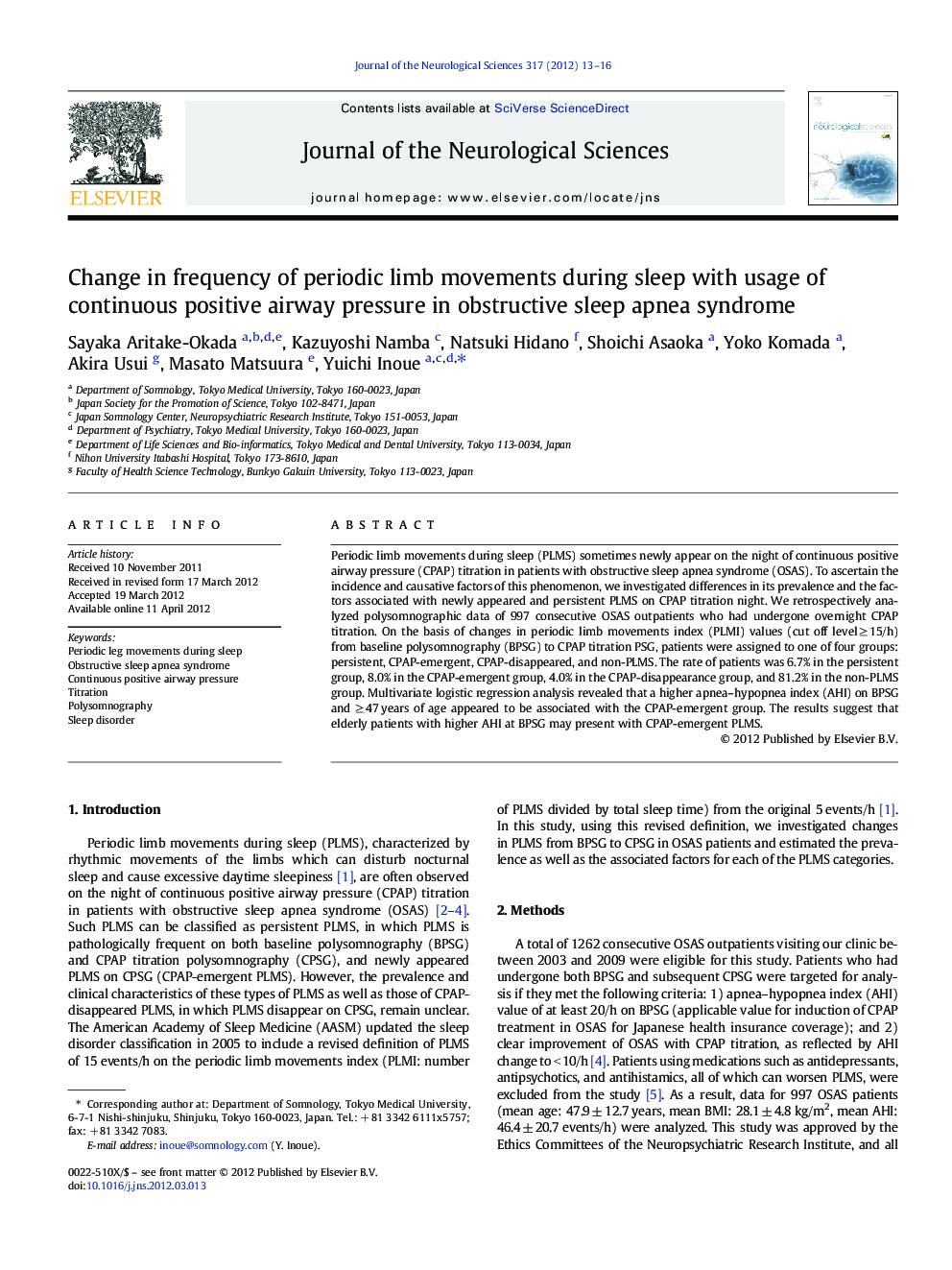| Article ID | Journal | Published Year | Pages | File Type |
|---|---|---|---|---|
| 8281067 | Journal of the Neurological Sciences | 2012 | 4 Pages |
Abstract
Periodic limb movements during sleep (PLMS) sometimes newly appear on the night of continuous positive airway pressure (CPAP) titration in patients with obstructive sleep apnea syndrome (OSAS). To ascertain the incidence and causative factors of this phenomenon, we investigated differences in its prevalence and the factors associated with newly appeared and persistent PLMS on CPAP titration night. We retrospectively analyzed polysomnographic data of 997 consecutive OSAS outpatients who had undergone overnight CPAP titration. On the basis of changes in periodic limb movements index (PLMI) values (cut off level â¥Â 15/h) from baseline polysomnography (BPSG) to CPAP titration PSG, patients were assigned to one of four groups: persistent, CPAP-emergent, CPAP-disappeared, and non-PLMS. The rate of patients was 6.7% in the persistent group, 8.0% in the CPAP-emergent group, 4.0% in the CPAP-disappearance group, and 81.2% in the non-PLMS group. Multivariate logistic regression analysis revealed that a higher apnea-hypopnea index (AHI) on BPSG and â¥Â 47 years of age appeared to be associated with the CPAP-emergent group. The results suggest that elderly patients with higher AHI at BPSG may present with CPAP-emergent PLMS.
Keywords
Related Topics
Life Sciences
Biochemistry, Genetics and Molecular Biology
Ageing
Authors
Sayaka Aritake-Okada, Kazuyoshi Namba, Natsuki Hidano, Shoichi Asaoka, Yoko Komada, Akira Usui, Masato Matsuura, Yuichi Inoue,
